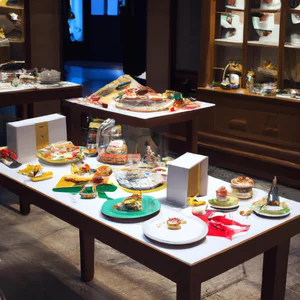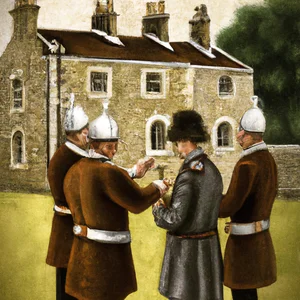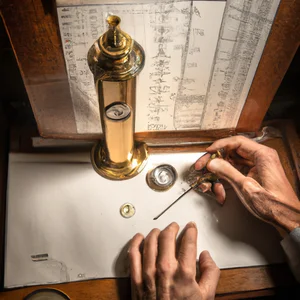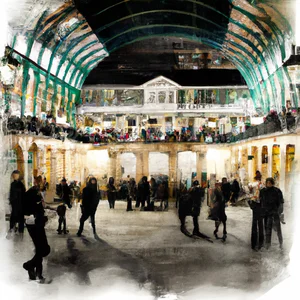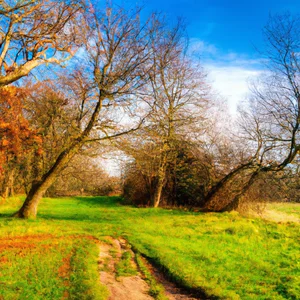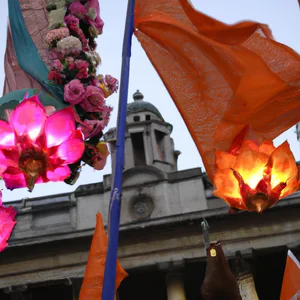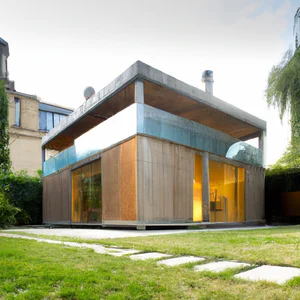Book your experience
Free Museums in London
Free museums in London: the definitive guide to discover the unmissable collections without spending a penny
So, let’s talk a bit about museums in London, which are really cool, and the great thing is that many of them don’t even ask you a penny to enter. Yes, you got it right! I mean, who doesn’t love a bit of culture without having to empty your wallet?
There are a lot of places in the city that are worth visiting. For example, the British Museum – oh, my God, it’s gigantic! There is so much stuff that you get lost walking through the various rooms. I recommend you take at least a couple of hours, maybe even more, if you want to see everything. Do you remember that time I lost my friend while we were trying to find the mummy? It was a big mess!
And let’s not forget the National Gallery, where you can see works by famous artists like Van Gogh and Monet. It’s like entering a dream, but if you’re not a great art expert, don’t worry! You can always take a tour and just enjoy the paintings, without feeling obligated to know everything. I think that just standing there looking at those works is an experience that leaves you speechless.
Then there is also the Tate Modern, which is a super interesting place, full of contemporary art. I must say that some works always make me think: “What the hell did I just see?”. But, hey, that’s the beauty of art too, right? Maybe you’ll find something there that stands out to you, and who knows, you might even discover a new favorite artist.
Oh, and let’s not forget the Natural History Museum. It’s like entering an adventure book, with dinosaurs and giant skeletons. The first time I went, I spent at least an hour looking at the famous T-Rex skeleton – it’s really impressive!
In short, London has a lot to offer, and the great thing is that you can have fun without spending a fortune. Sure, maybe not all museums are perfect, and there are days when there are too many people, but who cares? The important thing is that there is something for all tastes.
So, if you are in London, don’t miss these places! Maybe even bring a sandwich from home, so you save money and have more money to spend on a nice coffee later. And who knows, maybe one day we’ll go together for a museum tour. What do you think?
The best free museums in London to visit
A journey through the wonders of London
When I first set foot in the British Museum, my mind was immediately captivated by a sense of wonder. I remember walking through the ancient rooms, surrounded by artefacts that tell stories of disappeared civilizations and distant cultures. Every corner of the museum seemed to whisper secrets, and what was initially a simple afternoon of exploration turned into a deep dive into our collective history.
Discover the British Museum
The British Museum is undoubtedly one of the most prestigious museums in the world and offers free entry to all visitors. Its collection, which ranges from Egyptian mummies to Greek works of art, is so vast that at least a whole day isn’t enough to see it all. According to the museum’s official website, over eight million objects can be found, including the famous Rosetta Stone and the Parthenon Marbles.
Insider tip
A little-known tip is to visit the museum on Friday evenings, when special events and temporary exhibitions often take place. The crowd is smaller and the atmosphere is magical, with live music and artistic performances that make the experience even more engaging. Don’t forget to check the website for any upcoming events; you could find yourself faced with a unique and unforgettable experience.
A lasting cultural impact
The British Museum is not just a collection of objects; it is a symbol of global history and culture. Its mission to educate and inspire future generations is evidenced by its wide range of educational programs and activities for schools. The objects on display not only tell stories of bygone eras, but also encourage critical reflection on how history impacts our present and future.
Sustainability and responsible tourism
In an age where responsible tourism is key, the British Museum is committed to ensuring its practices are sustainable. The institution promotes open dialogue about art and culture and works to reduce its environmental impact. Attending free events at museums is a great way to support local culture without burdening the planet.
An immersive experience
As you stroll through the galleries, let your imagination take flight. Try closing your eyes for a moment and imagine the stories these objects could tell. You may also wish to join one of the free guided tours to deepen your understanding of the works on display.
Final reflections
Many think that free museums are less significant than paid ones, but this is a misconception. The British Museum is a testament that art and culture can and should be accessible to all. Next time you visit London, I invite you to consider how enriching it can be to discover these wonders without spending a pound. What stories do you expect to encounter on your journey?
Discover history at the British Museum
An unforgettable experience
I still remember the moment I crossed the threshold of the British Museum for the first time. The majestic neoclassical façade welcomed me with an embrace of thousand-year history. As I approached the famous Golden Bough, the sun filtered through the grand atrium, illuminating the ancient relics on display, creating an almost magical atmosphere. It was as if each piece told a story, a fragment of life from distant civilizations.
Practical information
The British Museum, located in the heart of London, is one of the most prestigious and fascinating museums in the world, and entry is free for everyone. Every year, millions of visitors wander through its galleries, which house over eight million works of art and historical artifacts. For those who wish to plan a visit, the museum is open every day from 10am to 5.30pm, with extended openings on Fridays until 8.30pm. I recommend you check the official website of the British Museum for any updates and temporary exhibitions.
An insider tip
A little-known tip is to visit the Marble Hall on the second floor, where you will find one of the most extraordinary collections of ancient sculptures. This space tends to be less crowded than other galleries, allowing you to enjoy a moment of tranquility and reflection in front of iconic works such as the Parthenon.
Cultural and historical impact
The British Museum is not just a place of exhibition; is a keeper of global history, offering a unique perspective on the world’s cultures. Its collections, which range from Egyptian art to ancient Roman artifacts, remind us of the interconnectedness of civilizations over the centuries. This museum has played a crucial role in educating and raising public awareness of our shared cultural heritage.
Sustainability and responsible tourism
In an age where sustainable tourism is increasingly important, the British Museum is playing its part. It has implemented practices to reduce environmental impact, such as the use of renewable energy and promoting events that raise public awareness of ecological issues. Participating in these events is a great way to combine your passion for culture with social responsibility.
Immersion in the atmosphere
Walking through the galleries, let yourself be enveloped by the atmosphere of wonder and discovery. Every corner of the museum invites you to explore and deepen your understanding of the world. Imagine that find yourself in front of the Rosetta Stone, the key piece that revealed the mysteries of the Egyptian language, while the buzz of the audience merges with the sound of footsteps on the marble floors.
An activity worth trying
I recommend you take one of the free guided tours offered by the museum. These visits are led by experts who share fascinating anecdotes and historical details, making the experience even more enriching.
Myths to dispel
A common misconception is that the British Museum is only for scholars and history buffs. In fact, it’s a welcoming place for everyone, with interactive activities and exhibits that spark the imagination of every visitor, regardless of age or background.
Final reflection
Every time you visit the British Museum, you have the opportunity to travel through time and space. Which story will you take home? This question invites us to reflect on how the past continues to influence our present and future. The next time you walk through those doors, take a moment to consider not only what you see, but also what it means.
Contemporary art at the Tate Modern: a unique experience
A memory that remains imprinted
I remember my first visit to the Tate Modern: I crossed the threshold of the former Bankside power station and was immediately enveloped by a vibrant and pulsating atmosphere. The enormous exhibition rooms, lit by natural lights that filter through the large windows, create a space that is as much a work of art as the installations on display. As I walked among bold sculptures and abstract paintings, my heart pounded, not only from the art around me, but also from the feeling of being part of a global dialogue about creativity.
Practical information on the Tate Modern
The Tate Modern is one of the most visited free museums in London, with over 5 million visitors a year. Situated along the River Thames, this temple of contemporary art features works by the likes of Picasso, Warhol and Hockney. Entry to the permanent collections is free, while some temporary exhibitions may require a ticket. For those who want to explore in greater depth, the museum offers free guided tours and interactive activities. Check the official website for updates on special events and ongoing exhibitions.
An insider tip
Here’s a secret that only true enthusiasts know: go up to level 10 of the building for a breathtaking panoramic view of London. The terrace offers a unique opportunity to admire the panorama of the city, especially at sunset, when the lights of London begin to shine. It’s a great way to end your visit, reflecting on the art and beauty of the capital.
The cultural impact of the Tate Modern
The birth of the Tate Modern in 2000 marked a turning point in the London art scene. It has democratized access to contemporary art, attracting a diverse audience and stimulating debates on the creation and enjoyment of art. Today, the museum is not only a place of exhibition, but also a cultural center that encourages community participation and engagement.
Sustainability and responsibility
Tate Modern is also committed to sustainable tourism practices. It has implemented initiatives to reduce environmental impact, such as the use of renewable energy and promoting public transport to reach the museum. Attending events here means not only enjoying art, but also supporting a space that cares about the future of the planet.
An immersion in the atmosphere
Walking among the works of the Tate Modern is like traveling through a kaleidoscope of emotions and ideas. Each room tells a story, and each work is an invitation to reflect and connect. Contemporary art, with its challenges and provocations, is always evolving, and the Tate is the perfect stage to explore this dynamic.
An experience not to be missed
During your visit, don’t miss the chance to participate in one of the creative workshops that the museum offers regularly. These activities will allow you to test yourself with different artistic techniques, stimulating your creativity and offering you a new perspective on the way you see art.
Myths to dispel
A common misconception is that contemporary art is difficult to understand or that it is not “accessible”. In fact, Tate Modern is committed to making art understandable and engaging for everyone. Don’t be afraid to express your emotions or opinions about the works; every reaction is valid and part of your experience.
A final reflection
As you leave the Tate Modern, I invite you to reflect on how contemporary art can influence your daily life. What emotions did it arouse in you? How might the way you see the world change in light of what you just experienced? London offers a unique artistic experience, and the Tate Modern is a key piece of this cultural mosaic.
The Science Museum: educational fun for everyone
An experience that ignites curiosity
I still remember the day I crossed the threshold of the Science Museum in London. It was a spring afternoon and the air was fresh and full of expectation. The children ran, the parents smiled and the energy was contagious. As I explored the wonders on display, I came across an interactive space rocket exhibit that caught my attention. The joy of discovering the world of science through practical experiences was an enlightening experience, which made me understand how this museum can be a place of learning for all ages.
Practical information
The Science Museum is located in South Kensington and offers free entry, making it one of the capital’s most accessible attractions. His vast collection spans everything from trains to medical technology, physics to astronomy. It is open every day from 10:00 to 18:00. For up-to-date information on temporary exhibitions and special events, you can visit the official [Science Museum] website (https://www.sciencemuseum.org.uk).
An insider tip
If you want a less crowded experience, I recommend visiting the museum during the early hours of the morning or on weekdays. Also, don’t forget to explore Wonderlab, an interactive exhibit where you can experience science in a fun and engaging way. It’s a little more expensive, but it’s worth every penny for the unique experience it offers.
Cultural and historical impact
The Science Museum is not just a place of exhibition, but a symbol of the British tradition of innovation and discovery. Founded in 1857, the museum has always played a fundamental role in promoting science and technology, educating generations on issues fundamental to modern society. Its mission is to inspire the public to explore the world of science and reflect on the importance of critical thinking.
Sustainable and responsible tourism
The museum is attentive to sustainability practices, promoting green initiatives such as recycling and the use of renewable energy sources for its operation. Furthermore, it encourages visitors to use public transport to reach the property, thus reducing the environmental impact of tourism.
Immerse yourself in the atmosphere
Imagine standing in front of a replica space rocket soaring toward the ceiling, while the sounds of science demonstrations fill the air. The Science Museum is a place where wonder mixes with knowledge, creating a vibrant atmosphere that stimulates curiosity and imagination.
Activities to try
Don’t miss the opportunity to participate in one of the live experiments held regularly in the museum. These events offer a hands-on and engaging way to understand complex scientific concepts, making learning an unforgettable adventure.
Myths to dispel
A common misconception is that the Science Museum is only for children. In fact, the exhibits and activities are designed to attract visitors of all ages, making it an ideal place for adults looking for intellectual stimulation and fun, too.
Final reflection
The visit to the Science Museum made me reflect on how important it is to continue exploring and keeping curiosity alive. When was the last time you discovered something new? This museum is not just a place of exhibition, but an invitation to all of us to remain curious and explore the fascinating world of science.
Amazing collections at the Victoria and Albert Museum
A journey into design and art
I still remember my first visit to the Victoria and Albert Museum, as I wandered through the rooms lit by large windows that let sunlight filter through. The air was filled with a sort of magic, a palpable energy that emanated from the works on display. In particular, I was struck by the section dedicated to design, where each object told a unique story, a tale of creativity and innovation. Here, the past and present intertwine, giving life to an experience that goes beyond simple observation; it is a continuous dialogue between eras, styles and cultures.
Practical information
Located in the heart of South Kensington, the Victoria and Albert Museum is easily accessible by tube; the nearest stop is South Kensington. Entry is free, but there are some temporary exhibitions that may require a ticket. It is advisable to check the museum’s official website for any updates and opening times: V&A Museum.
An insider tip
Did you know that the museum houses one of the largest fashion collections in the world? If you are passionate about clothing and accessories, I recommend you spend some time in the section dedicated to fashion, where you can admire historical and contemporary clothes. A little-known trick is that the museum also offers free guided tours; a perfect way to deepen your knowledge of the works on display and discover fascinating anecdotes that you might otherwise miss.
The cultural impact
The Victoria and Albert Museum is not just a place of exhibition, but a true cultural center that promotes creativity and innovation. Founded in 1852, the museum has always played a vital role in art education and design, influencing generations of artists and designers. Its mission is to make art and design accessible to all, contributing to a more creative and aware society.
Sustainable tourism practices
In an age where sustainability is key, the V&A is committed to reducing its environmental impact. The property has implemented sustainable management practices, such as the recycling of materials and the use of renewable energy. When you visit, you can contribute to this effort by using public transportation to get to the museum and following signs to reduce waste during your visit.
An unmissable experience
Don’t miss the opportunity to participate in one of the creative workshops that the museum hosts regularly, where you can try your hand at artistic and design activities. These events are a fantastic way to connect with other enthusiasts and take home a piece of your artistic experience.
Myths to dispel
A common misconception is that free museums are of lower quality than paid ones. On the contrary, the Victoria and Albert Museum is a prime example of how access to art and culture can be offered to all, without compromising the experience. The collections are curated with passion and attention to detail, making each visit an opportunity for learning and discovery.
Final reflection
As you leave the Victoria and Albert Museum, we invite you to reflect on how art impacts your daily life. Have you ever thought about how a simple design object can tell a profound story? Each visit is an invitation to explore not only the world of art, but also your relationship with it. The beauty of the museum experience is that it never ends; every object, every work of art, has the power to inspire you to see the world from a new perspective.
A journey into natural history at the Natural History Museum
I still remember my first visit to the Natural History Museum in London, a place where wonder mixes with knowledge. In that moment, as I admired the gigantic Brontosaurus skeleton that dominated the foyer, I realized that I was not simply a tourist, but an explorer in time. Every corner of the museum tells stories of creatures that walked the Earth millions of years ago, and every step brought me closer to a profound connection with our planet.
Practical and up-to-date information
Located in South Kensington, the Natural History Museum is easily accessible by tube, getting off at the South Kensington stop. Entry is free, although some temporary exhibitions may require a ticket. To plan your visit, I recommend checking the official website Natural History Museum for any updates on current events and exhibitions.
A little-known tip
A tip that only an insider can give you: don’t miss the chance to visit the Fossilization Courtyard on the ground floor. Here, you can watch live demonstrations by paleontologists working on real fossil finds. An experience that is often not publicized but offers a unique opportunity to see science in action.
Cultural and historical impact
The Natural History Museum is not just a place of exhibition; it is a guardian of our cultural and scientific heritage. Founded in 1881, it has a significant impact on the understanding of biodiversity and evolution, educating millions of visitors on crucial topics such as climate change and conservation. Its mission to raise awareness is more relevant than ever in a time when our environment is under pressure.
Sustainable tourism practices
The museum is actively committed to sustainable practices, such as using renewable energy and promoting conservation initiatives. Visiting the museum is a way to support science and research in the field of environmental sustainability. Consider using public transportation to get there; This way, you not only reduce your carbon footprint, but also help keep London cleaner.
Immersion in the atmosphere
Entering the Natural History Museum, you are surrounded by an almost magical atmosphere. The soft lights and hushed silence of the galleries invite you to reflect as you wander through the exhibitions. Visitors’ eyes shine with curiosity and wonder, as children enthusiastically point out prehistoric creatures and the wonders of nature. Each room is an invitation to explore and discover the mysteries of the natural world.
An activity worth trying
During your visit, don’t forget to take one of the free guided tours. These tours, led by experts, offer a detailed overview of the exhibits and enrich your understanding of natural history. Also, try to visit the Mineral Hall; the colors and shapes of the crystals will leave you speechless.
Addressing the myths
A common misconception is that the Natural History Museum is only for science enthusiasts. In reality, the museum is an engaging experience for everyone, regardless of age or interest. The exhibits are designed to stimulate curiosity and appreciation for the beauty of the natural world, making science accessible to all.
Final reflection
Next time you’re in London, consider spending an afternoon at the Natural History Museum. In a world increasingly dominated by technology, this museum invites you to reflect on our connection to the Earth. What is your natural history? How can you help preserve our planet? Let the wonders of this place inspire you to look at the world with new eyes.
Lesser-known museums: hidden gems to explore
A personal experience in the heart of London
During one of my walks in the Bloomsbury neighborhood, I came across a small, inconspicuous wooden door that seemed to tell timeless stories. It was the Charles Dickens Museum, the birthplace of the famous writer. Upon entering, I was transported to the 19th century, surrounded by objects that reflected the life and works of Dickens. This museum, despite being less known, offers an intimate and engaging experience, away from the crowds of the more famous tourist attractions.
Practical information
Many of these lesser-known museums offer free or reduced entry to visitors. Among the gems to discover, in addition to the Charles Dickens Museum, are the Museum of Brands, which explores the history of packaging and advertising, and the Freud Museum, the home of the famous psychoanalyst. For updated information on timetables and events, I recommend visiting the official websites or consulting the Visit London portal.
An insider tip
A tip that few people know is to visit the Hunterian Museum, located inside the University of London. This museum is a treasure trove of anatomical and historical curiosities, but is easily overlooked as it is not open to the public like other museums. Make sure you check the opening times and book in advance, as places are limited.
Cultural and historical impact
These lesser-known museums not only offer an insight into local history, but are also crucial to the preservation of stories and cultures that would otherwise be forgotten. For example, the Museum of London Docklands tells the story of trade and industry in the Port of London, which is key to understanding the city’s evolution.
Sustainability on the go
Many of these museums adopt sustainable practices, such as using recycled materials for exhibitions and organizing events that promote local culture and environmental awareness. Visiting these places helps support the local community and keeps London’s cultural history alive.
Immersion in the atmosphere
Imagine walking through rooms full of historical artefacts and works of art, with the smell of ancient wood and the soft light filtering through the windows. Every object tells a story, every corner is an invitation to explore. London’s lesser-known museums offer an intimate and welcoming atmosphere, allowing you to connect with history in a way that large museums don’t always manage to do.
Activities to try
Don’t miss the opportunity to participate in a workshop or guided tour, often offered for free or at a low cost. For example, many museums organize thematic events that allow you to fully immerse yourself in local culture and history.
Myths to dispel
A common misconception is that lesser-known museums are less interesting or informative. In fact, they often offer more personal and interactive experiences than their more popular counterparts. The quality of the displays and the attention to detail can surprise even the most skeptical visitors.
Final reflection
Next time you’re in London, consider going off the beaten path and discovering these hidden gems. What story awaits you behind the next door? Be amazed by the cultural richness that London has to offer, beyond its most famous museums.
Sustainability on the go: museums that make the difference
A personal experience
I vividly remember my first visit to the Museum of London Docklands, a place that not only tells the story of London’s maritime history, but is actively committed to a sustainable future. As I explored the exhibits on the city’s commercial history, I was struck by the presence of information panels explaining the eco-friendly practices implemented in the museum itself, such as the use of renewable energy and the recycling of materials. This not only enriches the visitor experience, but also demonstrates that culture and sustainability can go hand in hand.
Practical information
Many London museums, such as the Tate Modern and the Natural History Museum, do more than just display works of art or historical artefacts. These places have adopted eco-friendly initiatives, such as reducing plastic consumption and promoting low-impact events. According to a report by the charity Art Fund, over 70% of British museums are implementing sustainability strategies to reduce their ecological footprint.
Unconventional advice
If you want a unique experience, consider joining a guided bike tour that passes through some of the city’s most sustainable museums. This is a great opportunity to explore London responsibly, whilst discovering the beauty and history of its cultural spaces.
The cultural impact
Sustainability in London’s museums is not just a matter of green practices, but reflects a wider commitment to social and cultural responsibility. These places become stages for discussion on crucial issues such as climate change and conservation. Through exhibitions and educational programs, museums stimulate debate and encourage visitors to reflect on their role in society.
Sustainable tourism practices
When you visit these museums, you can help reduce your environmental impact by choosing to use public transport or cycling to get around. Many museums also offer green spaces where you can enjoy a picnic, thus promoting responsible and environmentally friendly tourism.
Immersion in the atmosphere
Imagine walking through the cool garden of the Victoria and Albert Museum, surrounded by art installations that encourage reflection on sustainability. The air is pervaded by a sense of community, while visitors animatedly discuss the works on display and the topics covered. This is the power of museums: they not only preserve the past, but also inspire the future.
Activities to try
Don’t miss the chance to attend a recycled art workshop at the Museum of London. These events are not only free, but will also allow you to explore creativity through waste materials, transforming everyday objects into works of art.
Common misconceptions
A common myth is that museums are boring and static places. In contrast, London’s museums are dynamic spaces, where art and culture blend with social and environmental commitment. Each visit can be an opportunity to learn and contribute to a greater cause.
Final reflection
As you prepare for your visit to London’s free museums, ask yourself: How can I contribute to a more sustainable future during my trip? Culture is not just what we see, but also how we choose to interact with the world around us surrounds.
Attend free cultural events at London museums
When it comes to museums in London, you can’t ignore the myriad of free cultural events that take place throughout the year. I remember a summer evening spent at the British Museum, when I had the opportunity to take part in a guided night tour. The atmosphere was magical: the rooms illuminated by soft lights, the echo of footsteps on the marble floors and the murmur of curious visitors sharing their discoveries. In that moment, I realized that museum experiences can be as fascinating as the works on display.
Events not to be missed
Many museums offer regular events such as talks, workshops and live performances, all free! For example, the National Gallery hosts weekly events exploring the works of the masters, while the Natural History Museum hosts evenings of stargazing and meetings with scientists. These activities not only enrich your visit, but also offer a unique opportunity to interact with experts and enthusiasts of art and science.
An insider tip
Here’s a little-known trick: Check museum websites or their social media pages to find out about pop-up events or special activities that may not be advertised widely. Sometimes, there are exclusive events just for London residents or those who sign up to a newsletter.
Cultural and historical impact
Attending these events not only enriches your knowledge but also helps support local culture. London is a melting pot of cultures and traditions, and museums represent an important platform for intercultural interaction and understanding. These experiences show how art and science can bring people together, creating a dialogue between different generations and backgrounds.
Sustainability and responsible tourism
Many London museums are committing to sustainability practices, such as using eco-friendly materials in their exhibitions and promoting events that raise awareness of environmental issues. Participating in these events allows you to be part of a larger movement, which enhances culture and respect for our planet.
Immerse yourself in the atmosphere
Imagine walking through the galleries, listening to an expert discuss a new exhibit while a group of local artists create live works. It is a vibrant and inspiring environment, where art comes to life before your eyes. The chance to meet artists and scientists, ask questions and share ideas makes each visit a unique experience.
An activity worth trying
I recommend checking a specific museum’s events calendar before planning your visit. You might discover a themed evening, an art workshop or a meeting with an author, making your experience even more memorable.
Myths to dispel
Free museums are often thought to be less interesting or of lower quality than paid ones. Nothing could be more wrong! The quality of the exhibitions and events is exceptional. London museums, in fact, are renowned worldwide for the accessibility of their collections and the attention dedicated to the community.
A final reflection
So, next time you’re in London, consider attending one of these free cultural events. Not only will you enrich your visit, but you will also have the opportunity to connect with the living culture of the city. What event are you most curious about?
Enjoy the local atmosphere in London’s museum cafes
An experience not to be missed
I still remember my first afternoon at the British Museum, where, after admiring the treasures of history, I found myself sipping tea in one of its cafes. Light filtered through the large windows, illuminating the porcelain cups and plates of pastries, while the buzz of other visitors created a lively background. This is the moment in which I realized that museum cafés are not just places to refresh, but real corners of cultural life, where art and gastronomy intertwine in an affectionate embrace.
Practical information
London’s museum cafes offer a wide variety of dining options, from fresh cakes to gourmet sandwiches. For example, the café at the Victoria and Albert Museum is known for its delicious vegetarian and vegan options, while the Tate Modern has stunning views of the Thames, ideal for a refreshment break. It is important to note that many of these cafes use local and sustainable ingredients, contributing to responsible tourism practices. For updated information, you can visit the official websites of the museums.
An insider tip
If you want an authentic experience, try visiting the Natural History Museum café in the late afternoon. Often, after 4pm, the flow of visitors decreases and you can enjoy a quiet moment while observing the enormous dinosaur fossils that surround you. Don’t forget to ask the staff which desserts are fresh of the day - they might surprise you with a little-known local specialty!
The cultural impact
These cafes are not just eateries; they are spaces for socialization and reflection, where people gather to discuss art, history and culture. Their presence in museums enriches the cultural experience, creating opportunities for meaningful interactions between visitors and works of art. Additionally, many cafes organize special events, such as reading evenings or culinary workshops, which allow you to further deepen your cultural knowledge.
Sustainable tourism practices
Many museum cafes adopt eco-friendly practices, such as using compostable tableware and promoting local suppliers. Choosing to eat in these places contributes to more sustainable and responsible tourism, supporting the local economy and reducing environmental impact.
An activity worth trying
I recommend you take part in one of the Sunday brunches organized in the museum cafés. These events not only offer delicious dishes prepared with fresh ingredients, but also include guided discussions on current artworks and exhibits, turning your meal into an educational experience.
Addressing the myths
A common misconception is that museum cafes are expensive and inaccessible. In fact, many offer reasonably priced options, with some dishes available for less than £5. Don’t let the prices scare you; exploring the menu might reveal budget-friendly culinary gems!
Final reflection
Next time you visit a museum in London, take a moment to stop in one of its cafes. I invite you to consider how a simple sip of coffee or dessert can transform into an opportunity to connect with the culture and history around you. What is your favorite museum café and what story do you have to tell?

 Architecture and Design
Architecture and Design Cities and Regions
Cities and Regions Culture and History
Culture and History Events and Festivals
Events and Festivals Fashion and Shopping
Fashion and Shopping Food and Wine
Food and Wine Nature and Adventure
Nature and Adventure Unique Experiences
Unique Experiences



















